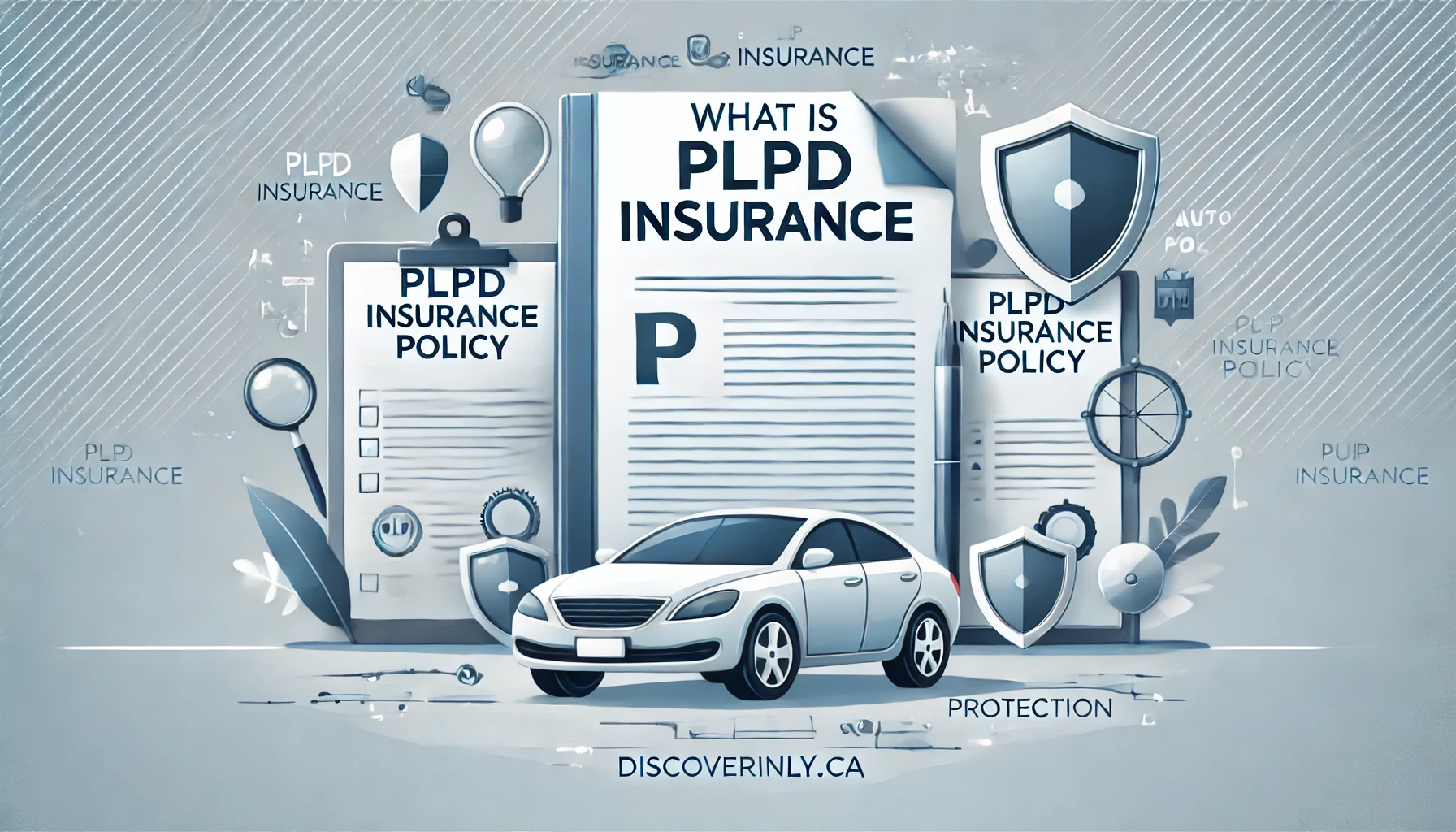What Is PLPD Insurance? Understanding Personal Liability and Property Damage Coverage
PLPD insurance, short for “Personal Liability and Property Damage,” is a type of auto insurance that covers you if you’re at fault in an accident that causes harm to others or damages their property. Unlike full coverage insurance, PLPD focuses solely on third-party claims, meaning it doesn’t cover your own vehicle or injuries. PLPD is often chosen by drivers looking to meet legal requirements for driving at a more affordable rate.
What Does PLPD Insurance Cover?
PLPD insurance offers two main types of coverage:
- Personal Liability: This covers the medical expenses for injuries you may cause to others in an accident where you’re at fault.
- Property Damage: This covers the cost of repairs if you damage someone else’s property, like their car or home structure, in an accident.
In short, PLPD covers others involved in an accident you cause, but it does not cover your own losses or medical bills.
Key Features of PLPD Insurance
PLPD insurance has a few distinctive features that make it appealing, especially for drivers looking for basic protection:
- Third-Party Focus: It only covers costs for others involved in an accident, not for the policyholder’s own injuries or vehicle damage.
- Budget-Friendly: Generally, PLPD has lower premiums than full coverage policies, making it a popular option for those wanting affordable insurance.
- Meets Legal Requirements: PLPD satisfies the minimum insurance requirements in many regions, keeping drivers legally insured without extra coverage.
How PLPD Insurance Works
Here’s a closer look at how PLPD protects you in an accident:
- Injury Coverage for Others: If you cause an accident that injures others, your personal liability coverage pays for their medical bills up to your policy’s limit.
- Property Damage Coverage: If you damage someone else’s property, this coverage pays for repairs up to the policy limit.
If the total costs exceed your policy’s coverage limits, you may be responsible for paying the remaining amount out of pocket.
Understanding Coverage Limits in PLPD Insurance
Your PLPD policy includes specific limits on how much it will pay in case of an accident. Here’s what those limits generally look like:
- Bodily Injury Per Person: The maximum amount paid out for any single person injured in an accident.
- Bodily Injury Per Accident: The total amount paid for injuries in one accident, covering all individuals involved.
- Property Damage Per Accident: The maximum amount paid for damage to property in one accident.
Choosing higher limits gives you more protection but may increase your monthly premium. Balancing affordability with sufficient coverage is key.
PLPD vs. Full Coverage Insurance
To see how PLPD compares to full coverage, here’s a quick breakdown:
| Feature | PLPD Insurance | Full Coverage Insurance |
|---|---|---|
| Own Vehicle Coverage | No | Yes (includes collision & comprehensive) |
| Cost | Lower premiums | Higher premiums |
| Protection Against Theft | No | Yes |
| Meets Legal Requirements | Yes | Yes, with added protection |
In short, full coverage provides broader protection, including for your own vehicle, but PLPD offers more basic and affordable coverage.
Who Should Consider PLPD Insurance?
PLPD insurance can be a good choice for:
- Drivers with Older Cars: If your car isn’t worth a lot, PLPD might be sufficient since it doesn’t cover your vehicle.
- Budget-Minded Drivers: PLPD generally costs less, making it ideal if you want to meet legal requirements without extra expense.
- Higher-Risk Drivers: Those with a history of accidents or violations may find PLPD a more affordable way to stay insured.
Pros and Cons of PLPD Insurance
PLPD insurance has some important advantages and disadvantages to consider:
Pros:
- Lower Premiums: Since it offers limited protection, PLPD is usually less expensive than full coverage options.
- Legal Compliance: It meets the minimum requirements to keep you legally insured.
Cons:
- No Coverage for Your Own Car: You’ll have to pay out of pocket for your own repairs if your car is damaged.
- Less Financial Protection: If damages exceed your policy’s limits, you’ll be responsible for additional costs.
Factors That Affect the Cost of PLPD Insurance
Several factors influence how much you’ll pay for PLPD insurance:
- Driving History: A clean driving record can mean lower premiums, while a history of accidents or tickets can increase costs.
- Location: If you live in a high-traffic or high-crime area, you may pay more for insurance.
- Coverage Limits: Choosing higher limits for better protection can raise your premiums.
- Age and Experience: Younger or less experienced drivers tend to pay higher premiums.
Choosing the Right Coverage for Your Needs
While PLPD insurance offers essential protection, it’s not for everyone. Here are some things to consider:
- Assets and Risk: If you have significant assets, higher coverage limits or full coverage may be a better fit.
- Comprehensive Needs: If you want protection against theft, natural disasters, or vandalism, consider adding additional coverage.
Conclusion
PLPD insurance is a basic auto insurance option, offering necessary coverage to meet legal requirements by covering liability and property damage for others. It’s an affordable choice for drivers who don’t need protection for their own vehicle or medical bills. If you’re looking for budget-friendly coverage, especially with an older car, PLPD could be a practical option. However, assessing your assets and risks will help ensure you’re adequately protected.
Frequently Asked Questions
- What does PLPD insurance cover?
- It covers injuries and property damage to others when you’re at fault but doesn’t cover your own car or injuries.
- Is PLPD full coverage?
- No, PLPD is liability-only, while full coverage includes extra protection like collision and comprehensive coverage.
- Can I switch from PLPD to full coverage?
- Yes, most insurers allow you to add collision and comprehensive coverage if you need more protection.
- Who is PLPD best for?
- It’s ideal for drivers of older cars or those wanting to meet minimum legal requirements affordably.
- Does PLPD have coverage limits?
- Yes, you can choose different coverage limits that affect how much the policy will pay in case of an accident.






